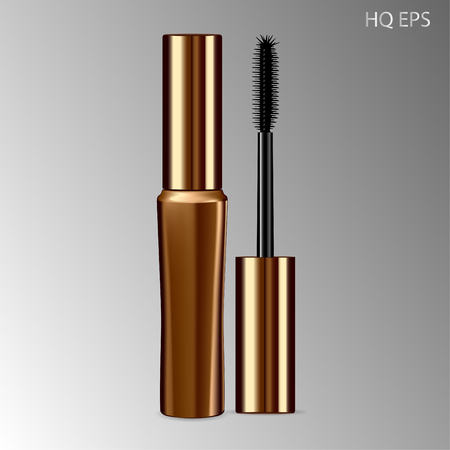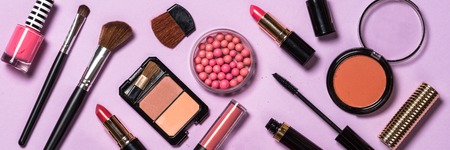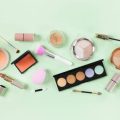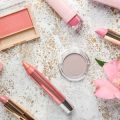The Growing Craze for Makeup Among Indian Youth
India’s youth are in the midst of a makeup revolution. Over the past decade, there has been a visible surge in interest towards cosmetics and beauty products among young Indians. This isn’t just about looking good—it’s about expressing identity, fitting in with global trends, and keeping pace with what’s seen on screens every day. The influence of Bollywood cannot be overstated here; actors and actresses set the tone for what’s considered beautiful, and their flawless looks inspire millions to try out similar styles at home. On top of that, social media platforms like Instagram and YouTube have made beauty tutorials, product reviews, and transformation reels accessible to everyone from Delhi to Coimbatore. Western culture also plays a significant role, introducing new beauty standards and brands that many youths aspire to emulate. As a result, makeup is no longer reserved for special occasions but has become part of everyday life for many students, young professionals, and influencers across India. All these factors together create a perfect storm where the demand for makeup is at an all-time high—setting the stage for both opportunities and challenges in the Indian beauty market.
2. Understanding Fake Makeup: What Is It and Why Is It Everywhere?
If you ask any Indian youth today, they’ll tell you – finding branded makeup at a “discount” is just a click or a street corner away. But before we dive into the why, let’s break down what exactly qualifies as ‘fake makeup’ in the Indian context and how it has flooded our markets.
What Counts as Fake Makeup?
| Type | Description | Common Signs |
|---|---|---|
| Counterfeit Products | Imitations of popular brands using similar packaging and logos. | Misspelled brand names, odd fragrances, cheap packaging. |
| Expired/Re-labeled Items | Out-of-date or damaged goods sold with altered labels or fake batch numbers. | No batch/expiry date, unusual texture or smell. |
| Unbranded Knock-offs | No-name products claiming to be “inspired by” top brands, usually with poor quality ingredients. | No official branding, suspiciously low price. |
How Fake Makeup is Sold in India
Online Platforms
E-commerce sites and social media are flooded with sellers advertising “original” products at unbelievable discounts. Many youth fall for these listings on Instagram pages, WhatsApp groups, or lesser-known shopping apps where authenticity checks are minimal.
Offline Markets & Street Shops
From Delhi’s Sarojini Nagar to Mumbai’s Linking Road, street vendors display branded-looking cosmetics at throwaway prices. Even some small beauty stores in tier-2 cities stock fake items alongside genuine ones, making it hard for average buyers to distinguish between the two.
Market Channels for Fake Makeup in India
| Channel Type | Examples | Main Buyers |
|---|---|---|
| Street Vendors | Pavement stalls, local bazaars | College students, daily commuters |
| Small Retail Shops | Neighborhood beauty stores, chemist shops without strict regulation | Youth in smaller towns/cities |
| Online Sellers | Social media resellers, unverified e-commerce sites/apps | Youth with high internet usage (urban & semi-urban) |
| Peer-to-Peer Sales | Friends/relatives sourcing in bulk from wholesale markets or abroad and reselling informally | Mainly student circles and young professionals looking for bargains |
Why Is Fake Makeup So Widespread?
The popularity of fake makeup among Indian youth comes down to three big factors: affordability (branded look at local prices), lack of awareness (many can’t spot the difference), and easy access (available both online and offline). For a generation obsessed with beauty trends but often on a tight budget, fake makeup feels like a shortcut – even though it comes with hidden risks.

3. Reasons Indian Youth Opt for Fake Makeup
Affordability: The Price Factor
If you have ever walked through a college campus in Delhi or Mumbai, you would notice how price-sensitive students are. Genuine international makeup brands like Huda Beauty or MAC can cost thousands of rupees, making them out of reach for most students. In contrast, fake makeup products offer similar packaging and branding at a fraction of the cost. It’s almost like getting the “look” without burning a hole in your pocket—a big reason why many young Indians take this route.
Peer Pressure & Social Media Influence
Let’s face it—Instagram reels and trending beauty challenges set new beauty standards every week. Among friend groups, there’s often an unspoken competition to flaunt the latest lipstick shade or highlighter. When everyone around you seems to own expensive makeup, the pressure mounts. Many youths feel compelled to fit in, even if it means buying counterfeit products just to keep up appearances.
Lack of Awareness About Consequences
Most college-goers I’ve interacted with admit they rarely check labels for authenticity. There’s a general lack of awareness about the harmful effects of fake cosmetics—like skin allergies or long-term health issues. For many, it’s just makeup, not realizing that substandard ingredients can lead to serious problems later on.
Easy Availability: Just a Tap Away
From local markets in Sarojini Nagar to online platforms like Instagram shops and WhatsApp groups, fake makeup is easily accessible. The sheer convenience and discreet delivery options make it tempting for youth who want quick fixes without much hassle. You don’t need to walk into a fancy mall; everything’s available at your fingertips.
The Allure of Dupes Among College Crowds
A unique phenomenon among Indian youth is the obsession with “dupes”—products that mimic high-end brands at lower prices. While some dupes are legitimate alternatives by local brands, others are outright fakes passed off as originals. For college students who want to experiment with trends but lack the budget, these lookalikes provide an affordable entry point into the world of luxury beauty—at least on the surface.
4. Risks and Real Stories: The Dark Side of Fake Makeup
When it comes to fake makeup, the risks go far beyond just saving a few rupees. Many Indian youth are unaware that these products can cause serious health hazards that might not be immediately visible. Let’s break down the consequences and look at real stories from India that shed light on the true cost of counterfeit cosmetics.
Health Hazards Associated with Fake Makeup
Fake makeup often contains harmful chemicals and unregulated ingredients. Prolonged use can lead to a host of skin problems and even long-term health issues. Some common risks include:
| Health Risk | Description | Common Symptoms |
|---|---|---|
| Skin Allergies | Reaction to unknown chemicals, preservatives, or dyes in fake makeup | Redness, itching, rashes, swelling |
| Long-Term Skin Damage | Sustained use can weaken skin’s natural barrier and cause pigmentation or premature aging | Dark spots, uneven tone, wrinkles, sensitivity |
| Eye Infections | Contaminated eye products can introduce bacteria or fungi into sensitive areas | Irritation, conjunctivitis, blurred vision |
| Serious Health Issues | Toxic substances like lead or mercury in fake products may enter bloodstream over time | Headaches, hormonal imbalance, organ damage (in severe cases) |
Real-Life Incidents: Indian Case Studies
The dangers are not just theoretical. There have been several reported incidents across India where fake makeup has led to medical emergencies and legal action:
- Mumbai Incident (2022): A 22-year-old college student developed severe facial burns after using a popular counterfeit highlighter purchased from a local market in Bandra. She had to undergo dermatological treatment for three months.
- Delhi Case (2021): A group of influencers unknowingly promoted fake lipstick brands on Instagram. Several followers reported allergic reactions and filed complaints with consumer forums.
- Bengaluru Crackdown (2023): The city police raided a warehouse storing thousands of units of fake branded cosmetics. Many victims came forward sharing experiences of persistent acne and eye infections caused by these products.
Why Are Indian Youth Vulnerable?
Youth in India are especially targeted because of their desire to experiment with trending looks without breaking the bank. Many also trust online sellers who use “original packaging” but supply duplicates. The lack of awareness about ingredient safety makes them easy victims.
The Bottom Line: Is It Worth the Risk?
No matter how tempting the price or packaging, fake makeup is simply not worth the gamble with your health. These real-life stories and hard facts should serve as a wake-up call for anyone considering taking shortcuts when it comes to personal care products.
5. What Drives the Market? Insider Insights
When we dig deep into why fake makeup is so rampant among Indian youth, its not just about affordability or trends—its about how these products actually flood our markets. The supply chain for counterfeit cosmetics is surprisingly complex. Many of these items originate from unregulated factories, often outside India, and are shipped in bulk to major cities like Mumbai, Delhi, and Kolkata. From there, they trickle down to local markets through a network of middlemen who know how to avoid detection. Small sellers, especially those operating in local bazaars or through WhatsApp and Instagram shops, play a key role. They often buy these goods cheaply in wholesale markets like Sadar Bazaar or Crawford Market and sell them at attractive prices that appeal to price-sensitive college students and young professionals.
The Role of Small Sellers
In my experience visiting several street markets across Delhi and Bangalore, it’s clear that small-time vendors are not always fully aware of the risks involved in selling fake makeup—they’re just trying to make a living. These sellers are quick to point out that their products “look just like the original” and are “imported,” but the lack of official bills or packaging should be a red flag. Their customer base is mostly young women looking for trendy brands at a fraction of the cost.
Influence of Social Media Promotions
Social media has turbocharged this market. Influencers and micro-sellers on platforms like Instagram and Facebook regularly showcase cheap ‘dupes’ and host live sales. The marketing lingo—‘budget-friendly’, ‘just like MAC’, ‘Kylie quality’—resonates with aspirational buyers. Sometimes, even popular YouTubers unknowingly promote counterfeit products by reviewing them alongside originals. This blurs the line between genuine and fake, making it harder for average buyers to spot the difference.
How Fake Makeup Enters India
Customs loopholes also play their part. Many parcels are declared as generic beauty goods or samples, allowing them to enter without much scrutiny. Once inside, there’s little regulation on distribution at the retail level, especially in tier-2 and tier-3 cities where brand awareness is lower.
This multi-layered supply chain, combined with aggressive social media marketing and willing local sellers, explains why fake makeup remains such a tempting—and risky—choice for Indian youth today.
6. Solutions: Steps for Safer Beauty Choices
Suggestions for Indian Youth: How to Spot Fake Makeup
In my personal experience, spotting fake makeup in Indian markets can be tricky, especially with the flood of international brands and dupes. First, always check the packaging—real products have proper labeling, barcodes, and no spelling errors. I’ve noticed that fake items often have poor-quality printing or mismatched fonts. Also, smell the product; original cosmetics rarely have strong chemical odours. Testers are your friend, but never compromise on hygiene even when swatching at local stores.
Tips for Safer Shopping (Online and Local Markets)
Online Shopping:
When buying online, stick to trusted platforms like Nykaa, Amazon (only ‘Fulfilled by Amazon’), or brand websites. Avoid deals that sound too good to be true—if a MAC lipstick is selling for ₹200, it’s definitely not genuine. Always read reviews and check seller ratings. I personally avoid random Instagram or WhatsApp sellers unless they’re officially affiliated with a reputed store.
Local Markets:
If you’re shopping in places like Sarojini Nagar or local beauty shops, ask for bills and check for import stickers if it’s an international product. Don’t hesitate to ask questions—genuine sellers are happy to explain why their prices are higher than street vendors. Remember, your skin’s health is worth more than saving a few bucks.
Awareness Campaigns
The government and influencers are now joining hands to spread awareness about counterfeit cosmetics in India. Campaigns like #ChooseSafeBeauty educate youth on social media through reels and stories. Schools and colleges could also host workshops—something I wish was available during my college days—to show real vs fake product differences firsthand.
Trusted Brands: Stick With What’s Reliable
It’s tempting to try out new brands seen on YouTube or Instagram, but sticking to established names like Lakmé, Maybelline India, Sugar Cosmetics, or Lotus Herbals reduces risk. These brands have official outlets and certified resellers across major cities and towns. Even if you want to experiment, do a patch test before applying anything new extensively.
Final Thoughts
The demand for cheap makeup is understandable given tight student budgets and peer pressure in India. But prioritising skin safety and self-confidence over viral trends will pay off in the long run. By following these practical tips and being vigilant shoppers, Indian youth can enjoy makeup without risking their health.


